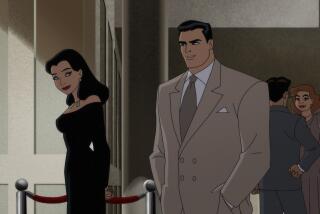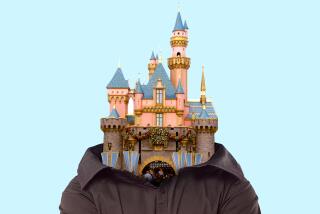A Show of Force
Most sci-fi video games shoot for the stars. LucasArts’ “Star Wars Starfighter” actually takes you there. Production Manager Reeve S. Thompson describes what it’s like trying to achieve liftoff with a space-flight simulation, especially such a prominently branded one.
Q: Feel any pressure working with the “Star Wars” license?
A: Of course. “Star Wars” fans are some of the most passionate fans in the world, and we don’t want to disappoint them. Luckily, the team is made up of some of the biggest “Star Wars” fans you could find, so we have a good sense what will make fans happy.
Q: Just how much, if any, input does George Lucas have on these projects?
A: We are in constant contact with Skywalker Ranch regarding our “Star Wars” games, so George does have a good sense of what’s going on. We send up all our ideas for new ships, characters and story lines for George and licensing’s approval. But they give us a lot of freedom to develop elements we’re interested in.
Q: How true to the spirit of the series do you stay?
A: We try very hard to stay in the spirit of the series. The “Star Wars” spirit is what people look for and expect from games like this. We’re excited because the new consoles like the PS2 let us get so much closer to the experience of the movies than we ever have before. Playing “Starfighter” is the closest I’ve ever come to feeling like I’m actually in a space battle, and I think a lot of other players will feel the same way.
Q: Hardest part of simulating a fictional vehicle like a starfighter is . . . ?
A: The hardest part is making sure it’s fun. We want to make it as realistic, or as similar to actual flying, as we can, but it’s more important that the game is entertaining. Fictional vehicles let us bend the rules more than traditional flight-sims would, so that helps, but it’s our test department that really kicks our butt to make the experience of flying a good one. They play this game day in and day out and until they’re happy, we’re not happy.
Q: Any specific formulas applied when creating new content for this universe?
A: We try not to become too formulaic. We want the content to feel familiar but also new. This is tough at times, but it also helps when formulating stories. It provides a context and a point of reference to everyone involved in the story-creation process, and this helps a lot.
Q: Can action game characters be as memorable as their adventure or role-playing counterparts?
A: I think so. You don’t need characters to say a ton to get a sense of who they are and what they’re about. Most great characters--Obi-Wan, Indiana Jones, etc.--express themselves in few words. They say a sentence and the audience says, “OK, I get it, I know who they are.” So I think it’s more important to have quality lines, not necessarily a high quantity of lines.
Q: What kind of effort goes into getting game-play handling just right?
A: Testing, testing, testing. We encourage a good working relationship between our test department and the artists and programmers creating the game. The testers are the authority on what works and what doesn’t in the game, and we listen to them every step of the way. I think on a lot of games programmers don’t talk directly to the testers, and that’s a shame. It’s a resource they should constantly use. It’s the best way of understanding game play and making sure you get it just right.
Q: Can fans actually influence the design of such a project?
A: Yes, but they’ll need to apply for a job. We can’t really talk about games before they’re announced, so that limits the interaction these games have with the outside world. But we do listen to everyone within the company, whether they’re on the project or not. We have what are called “pizza orgies,” where the whole company is invited to come play the game, eat pizza and give feedback. That’s the closest we can get to showing the game to the general public while it’s still early in development.
Q: Given the subject matter, does any weird stuff go on around the office?
A: LucasArts is a great place to work, and it’s because of the creativity of all the people in the office. There are some hilarious e-mails that go around. If you trash talk someone in a game of “Counterstrike” or “Quake,” the next thing you know, someone creates a fake QuickTime movie or image of you doing all sorts of crazy things. I probably shouldn’t go into the details.
Q: Do you believe in the Force?
A: Of course. We wouldn’t have finished this game if it weren’t for it! It was an energy that penetrated the team, flowed through it and brought us all together.
*
Scott Steinberg is a freelance writer specializing in video games.
More to Read
The biggest entertainment stories
Get our big stories about Hollywood, film, television, music, arts, culture and more right in your inbox as soon as they publish.
You may occasionally receive promotional content from the Los Angeles Times.










